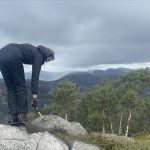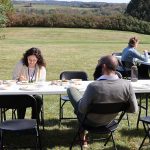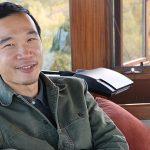zfishman
- December 26, 2019
- zfishman
The locked office of the late climate scientist Wallace “Wally” Broecker displays a wooden ship’s wheel, mounted on a window-paneled wall behind his former desk.
- November 20, 2019
- zfishman
Dozens of scientists convene every year at the Comer Climate Conference to share new research about rising oceans and melting glaciers, both today and in
- November 12, 2019
- zfishman
A 30-mile-long strip of sea ice in northwest Greenland, once thought to be a permanent structure, didn’t exist until 2,000 years ago, according to newly
- October 29, 2019
- zfishman
Richard Alley caught a cold while flying to southwest Wisconsin for the annual Comer Climate Conference land, hosted each fall by the Comer Family Foundation.
Categories
Latest Articles
December 30, 2024
December 30, 2024
Contact Information
Abigail Foerstner, Managing Editor and Medill Associate Professor




